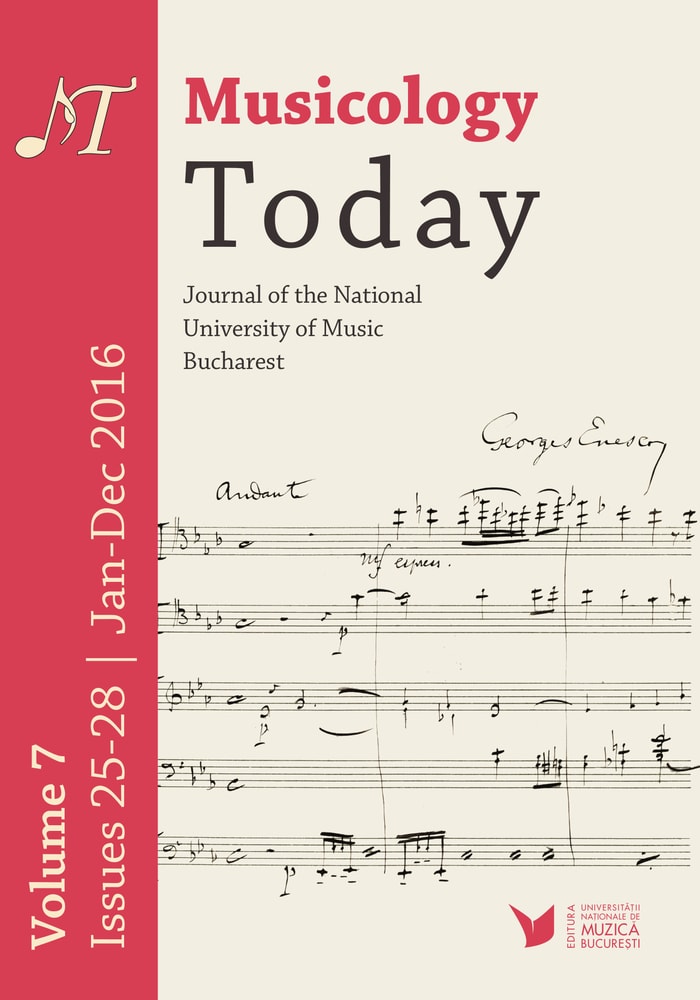The Relationship between Musical Language and Sound Dramaturgy in the Late Works of Alexander Scriabin: Dissociation versus Determination
The Relationship between Musical Language and Sound Dramaturgy in the Late Works of Alexander Scriabin: Dissociation versus Determination
Author(s): Laura Otilia VasiliuContributor(s): Emanuel-Alexandru Vasiliu (Translator)
Subject(s): Music
Published by: Editura Universității Naționale de Muzică din București
Keywords: pitch-class set theory; modes; harmony; dramaturgy of form;
Summary/Abstract: In a study we have published in 2002, a first example refers to the modal structure of the pitch organization (the tone-semitone mode in Piano Sonata No. 6 by Scriabin), deduced from the make-up and succession of chords. Rightly do we ask ourselves the question now whether the time progression of the pitch structure observed early in the work applies the laws of formal articulation in modalism: transposition, complementarity, proportionality (symmetry), projecting the modal (intervallic) structure onto the tonal plane of the work. The architectures resulted from these techniques are inscribed in the category of non-developing forms created through juxtaposition, alternation and variation. How do we interpret, however, the articulation of sonata forms in Scriabin’s piano sonatas? If explaining his pitch organization has represented a renewed challenge for international musicology, materialized in multiple analytic and monographic studies from the beginning of the 1970s to the present day, the influence of his harmonic thinking on the temporal modeling of form is still at the outset. We shall see why.
Journal: Musicology Today: Journal of the National University of Music Bucharest
- Issue Year: 7/2016
- Issue No: 25
- Page Range: 13-28
- Page Count: 17
- Language: English

